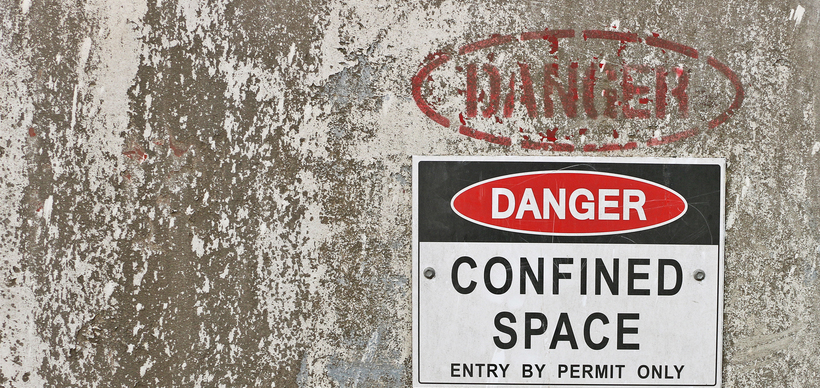Permit Vs. Non-Permit Confined Space: What’s The Difference?
Permit Vs. Non-Permit Confined Space: What’s The Difference?
June 22, 2023 |
Confined spaces are dangerous. They can be filled with dangerous gases, liquids, or solids. They may contain electrical hazards, fire hazards, and more. OSHA requires employers to know how to identify a confined space and protect their workers from entering it if they’re not adequately prepared. A permit is not required for entering a confined space, but if you plan on entering one, then it’s best to have one on hand just in case something goes wrong.
Permit-Required Confined Spaces
Permit-Required Confined Spaces (PSCS) are spaces that have one or more of the following characteristics:
- They’re large enough to permit entry by a person and are not designed for continuous employee occupancy.
- They can potentially contain a hazardous atmosphere, oxygen-deficient atmosphere, explosive gas mixture, or other severe health or safety hazards.
- They contain materials that may engulf an entrant should the material accidentally shift, if ventilation fails, or if there’s a fire within the space.
- Examples include tanks, vessels, storage bins, and pipelines. These spaces can be dangerous if they aren’t properly ventilated and equipped with safety devices such as oxygen monitors or breathing equipment for workers entering them.
OSHA Requirements For A Permit-Required Confined Space
If you’re unfamiliar with OSHA, it’s the Occupational Safety and Health Administration. They’re responsible for ensuring employers provide their workers safe working conditions. One way they do this is by regulating how employers handle confined spaces-which are defined as being large enough to permit an employee to enter and perform work but which have limited or restricted means for entry or exit (e.g., through valves) or limited natural ventilation (e.g., blocked vents).
OSHA requires that if your company performs work in one of these types of spaces, you must have an approved program before anyone enters the space. This includes training employees on how to enter and exit these areas safely; having rescue equipment ready at all times; providing proper ventilation while working inside; having appropriate PPE available so workers can protect themselves from hazards like toxic fumes/chemicals etc.; conducting regular inspections throughout each shift before anyone goes into any confined area. Etc.
Non-Permit Confined Spaces
A non-permit-required confined space is a work area that does not meet the definition of a permit-required confined space. The space must be entered only if the employer has conducted a risk assessment and determined that the hazards can be controlled or if there are no other viable options for performing work in the area.
This entry type is also called “permit exempt” or “non-mandatory.” This designation does not mean an employer does not need to comply with any OSHA standards when entering these spaces; instead, it means that entry into these areas can occur without obtaining an approved entry permit through their safety manager or supervisor.
OSHA Requirements For A Non-Permit-Required Confined Space
Hazard Assessment: A hazard assessment is the first step in identifying a confined space and determining whether it’s safe to enter. You can’t know what hazards are present or how to control them until you know what you’re dealing with.
- Identify the hazards: What are the potential dangers? This could include anything from falling objects to toxic gases to electrical shock.
- Identify controls: What will keep employees from getting hurt? Is an air monitor installed that alerts workers when dangerous oxygen or carbon monoxide levels build up in their spacesuits? Are all tools tethered so they don’t get dropped onto someone below? Has someone tested all equipment before entering so there aren’t any surprises waiting inside (like loose wires or malfunctioning alarms)?
- Identify employees who will enter: Who needs training on handling situations in this environment? Is everyone required by law/policy/guidance documentation (or just common sense) not supposed to go into certain areas without proper training/equipment/protection-such as those who’ve never been trained on rigging equipment such as ladders or scaffolding; those who haven’t received proper training on handling hazardous materials such as asbestos fibers. Etc.
Entry Permit: An Entry Permit is a document that outlines the requirements for entering a confined space. It’s used with a Hazard Assessment, and the employer or their representative must issue it.
Training and Equipment: Training is vital to any confined space program. A permit-required confined space must be properly trained and equipped to enter, while non-permit spaces do not require any training or equipment beyond what you would typically use to do your job.
